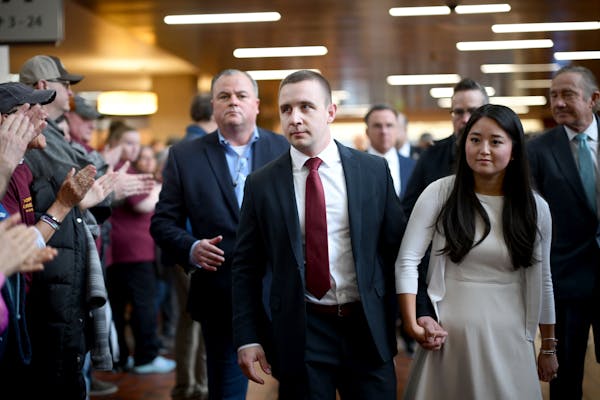When Brittany Galan was diagnosed with leukemia at 6 weeks old, doctors warned her parents she had little chance of surviving. But after being treated with chemotherapy, "I lived and lived!" said the exuberant 24-year-old. "Everyone calls me the miracle baby."
The lifesaving chemo, however, took a heavy toll. It "messed me up neurologically," Galan said. In grade school, she had trouble with reading and math and eventually went on ADHD medication. In college, the once-avid runner developed a heart problem. Recently, Galan, who juggles two part-time jobs working with children with emotional problems, began taking medication for anxiety and depression.
"Sometimes I think, 'What's next?' " she said. "I take a lot of pills. I feel like an old lady."
One of medicine's greatest successes is the sharp rise in survival rates for children with cancer. But the flip side of that success is that many of those children are turning up years or even decades later with serious and sometimes life-threatening complications, including second cancers, heart disorders, cognitive problems and infertility.
"These treatments seem to accelerate the aging process," said Greg Aune, a researcher and pediatric oncologist who works at a clinic for childhood cancer survivors at University Hospital in San Antonio, where Galan gets her care.
Aune, like a growing number of scientists and clinicians, is focusing intently on "late effects" of cancer treatments. With the ranks of survivors swelling, there is an urgent need to understand the treatments' effects on the entire body, not just the tumor, and to come up with less-toxic therapies.
In the 1960s, fewer than half of children with cancer were alive five years after their diagnoses; now, more than 80 percent are.
Yet the improved survival rates "came at a high cost," said Gregory Armstrong, an oncologist at St. Jude's Children's Research Hospital in Memphis. In the 1980s, survivors began worrying about new health problems, but the severity and connection to their treatments were not appreciated until years later. "This is a population that appears much older than its chronological age," Armstrong said.
As cancer doctors realized that patients might live not just for another five years but for another five decades or more, their just-keep-them-alive impulse evolved. Doctors carefully cut back on chemo and radiation for patients who seemed unlikely to relapse.
The less-punishing therapies bolstered long-term survival. Almost 11 percent of five-year survivors diagnosed with cancer in the 1970s were dead within 15 years of their diagnoses; that dropped to less than 6 percent for those treated in the 1990s, according to Armstrong's research.
Still, patients continue to suffer from severe late effects. By age 50, 1 in 3 women who received chest radiation for Hodgkin's lymphoma will develop breast cancer, compared with less than 1 in 20 in the general population, Armstrong said.
When Aune is not caring for patients at University Hospital, he spends much of his time in nearby Greehey Children's Cancer Research Institute, where he oversees experiments in mice on the effects of chemo. Much of the research on late effects involves the heart, which is especially vulnerable to aggressive childhood treatments.
One mouse experiment involves a medication called dexrazoxane, which is used to prevent heart damage caused by certain chemo drugs in breast-cancer patients. Its use in children has been controversial and spotty because some older studies have suggested that the medication, which is given at the same time as chemo, increases the risk of second cancers. There have also been concerns that it could blunt the cancer-fighting effectiveness of chemo.
But those worries have been largely disproved in recent years, and now a clinical trial in humans may be paving the way for widespread use of the drug, also called Zinecard.
Eric Chow, an oncologist at Fred Hutchinson Cancer Research Center in Seattle, is leading an effort to see whether the drug prevents long-term cardiac deterioration. He and other researchers are scrutinizing the cardiac function of people who were in trials in the late 1990s and early 2000s and treated with either doxorubicin alone or the chemo drug plus Zinecard, the heart-protectant.
A preliminary analysis showed that the Zinecard group appeared to have "more preserved" heart function many years later. One theory is that the drug interferes with a protein that makes heart tissue more vulnerable to certain chemo agents.
Aune has a personal stake in the research. As a teenager, he was diagnosed with Hodgkin's lymphoma and treated with intensive radiation and chemo. Two decades later, he ended up in emergency surgery to replace a badly scarred heart valve and three blocked arteries, a direct result of the treatment. At 41, he had a mild stroke while at his daughter's gymnastics class and was diagnosed with diabetes. His childhood cancer treatment saved his life, and at 43, he appears robust, but he worries that his battered heart might fail.
"You never know what's going to come your way," he said, "so you better do what you want to do now."
Minnesota DFL wants faster clean energy permits, but some are wary of shortcutting public input

NASA hears from Voyager 1, the most distant spacecraft from Earth, after months of quiet

The House votes for possible TikTok ban in the US, but don't expect the app to go away anytime soon

Why you should donate clothing: It (probably) won't end up at the dump

